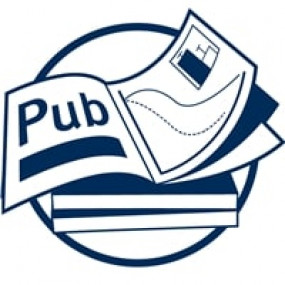TABLE OF CONTENTS
Title Page
Table of Contents
Abstract
Chapter One
1.1 Introduction
1.2 Objectives
1.3 Operational
Definition of Terms
1.4 Anatomy
and Physiology of the Urinary System
Chapter Two
2.1 Literature Review – Urinary Tract
Infections
2.2 The
Disease - Urinary Tract Infection
2.3 Types of Urinary Tract Infection
2.4 Causes of Urinary Tract Infection
2.5 Predisposing Factors to Urinary Tract
Infections
2.6 Clinical Manifestations of Urinary Tract
Infections
2.7 Signs and Symptoms in Infants
2.8 Pathophysiology of Urinary Tract
Infections
2.9 Incidence of Urinary Tract Infections
2.10 Investigation/Diagnosis of Urinary Tract
Infections
2.11 Management of Urinary Tract Infections
2.12 Prevention of Urinary Tract Infections
2.13 Prognosis of Urinary Tract Infections
2.14 Complications of Urinary Tract
Infections
Chapter
Three
3.1 Discussion
3.2 Conclusion
3.3 Recommendation
3.3.1 To the Parents
3.3.2 To the People in the Communities
3.3.3 To the Doctors and Nurses
3.3.4 To the Government
References
ABSTRACT
Urinary Tract Infection (UTI) is one of the
major health problems found in people of different age, gender and race with a
high rate of occurrence. This study aims at evaluating the frequency of
recurrent Urinary Tract Infections and related factors especially in children
and females. It also focuses on the types, causes, predisposing factors,
treatment, diagnosis, prognosis and management with recommendations proffered
on how to mitigate the spread of Urinary Tract Infections.
Chapter One
1.1 Introduction
Urinary Tract Infections (UTIs) are the
inflammatory disorders of the urinary tract caused by the abnormal growth of
pathogens. [Adu 2006]
UTI is known to cause short term morbidity in
terms of fever, dysuria and lower abdominal pain which may result in permanent
scaring of the kidney. [Amali 2013]
Urinary Tract Infections may be asymptomatic,
acute, chronic, complicated and uncomplicated. The clinical manifestations of
UTIs depends on the portion of the urinary tract involved, the etiologic
organisms, the severity of the infection and the patient’s ability to mount an
immune response to it.
The symptoms of Urinary Tract Infections
include: fever, burning sensations while urinating, lower abdominal pain,
itching, formation of blisters and ulcers in the genital area etc. The nature
of the UTI depends generally on the age of the person infected and the location
of the urinary tract infected. [Amali 2013]
Several factors such as gender, age,
circumcision, urinary catheter, genitourinary tract abnormalities, pregnancy
contribute significantly to the risks of recurrent UTIs. [Suzzane and Brenda
2012]
The most common pathogenic organisms isolated
in UTIs include E.coli followed by K.Pneumoniae, staphylococcus, proteins.
The prevalence of UTIs is higher in females
than in males and this can be attributed to the length of the urethra which is
usually shorter in females than in males. [Suzzane and Brenda 2012]
1.2 Objective
of Study
The focus of this work is to look closely
into the causes of Urinary Tract Infections and ways to manage them.
The following objectives will be considered:
a.
Ascertain the causes of Urinary Tract
Infections (UTIs)
b.
Explain the management of UTIs
c.
Assess people’s knowledge of Urinary Tract
Infections.
d.
Discuss preventive measures to Urinary Tract
Infections.
1.3 Operational
Definition of Terms
Causes: A person or thing
that gives rise to an action, phenomenon or condition.
Urinary Tract: The
organs that make urine and remove it from the body.
Infection: The process of the
body being captured by harmful micro-organisms.
Management: All the activities
and tasks undertaken for achieving goals.
1.4 Anatomy and Physiology of the Urinary Systems.
The organs of the urinary
system include the kidneys, renal pelvis,
ureters, bladder and urethra. The body takes nutrients from food and
converts them to energy. After the body has taken the food components that it
needs, waste products are left behind in the bowel and in the blood.
The kidney and urinary systems help the body
to eliminate liquid waste called urea, and to keep chemicals, such as
potassium and sodium, and water in balance. Urea is produced when foods
containing protein, such as meat, poultry, and certain vegetables, are broken
down in the body. Urea is carried in the bloodstream to the kidneys, where it
is removed along with water and other wastes in the form of urine. [Saladin
2014]

Figure 1 The Urinary System (Extracted from https://nurseslabs.com/urinary-system/ )
The Kidney
The kidneys are
a pair of bean-shaped organs on either side of your spine,
below your ribs and behind your belly. Each kidney is about 4 or 5 inches long,
roughly the size of a large fist.

Figure 2 The Kidneys (Extract from https://nurseslabs.com/urinary-system/)
The kidneys' job is to filter your blood.
They remove wastes, control the body's fluid balance, and keep the right levels
of electrolytes.
All of the blood in your body passes through them several times a day.
Blood comes
into the kidney, waste gets removed, and salt, water,
and minerals are
adjusted, if needed. The filtered blood goes back into the body. Waste gets
turned into urine,
which collects in the kidney's pelvis -- a funnel-shaped structure that
drains down a tube called the ureter to the bladder.
Each kidney has
around a million tiny filters called nephrons. You could have only 10% of your
kidneys working, and you may not notice any symptoms or problems.
If blood stops flowing into a kidney, part or
all of it could die. That can lead to kidney failure. [Mayo Clinic 2020]

Figure 3 (Extracted from www.hopkinsmedicine.org)
The urinary system — which includes the
kidneys, ureters, bladder and urethra — is responsible for removing waste from the
body through urine. The kidneys, located toward the back in the upper abdomen,
produce urine by filtering waste and fluid from the blood. That urine then
travels through the ureters to the bladder, where the urine is stored until one
can eliminate it at an appropriate time.
Click “DOWNLOAD NOW” below to get the complete seminar material
FOR QUICK HELP CHAT WITH US NOW!
+(234) 0814 780 1594
Click “DOWNLOAD NOW” below to get the complete Seminar
FOR QUICK HELP CHAT WITH US NOW!
+(234) 0814 780 1594
Buyers has the right to create
dispute within seven (7) days of purchase for 100% refund request when
you experience issue with the file received.
Dispute can only be created when
you receive a corrupt file, a wrong file or irregularities in the table of
contents and content of the file you received.
ProjectShelve.com shall either
provide the appropriate file within 48hrs or
send refund excluding your bank transaction charges. Term and
Conditions are applied.
Buyers are expected to confirm
that the material you are paying for is available on our website
ProjectShelve.com and you have selected the right material, you have also gone
through the preliminary pages and it interests you before payment. DO NOT MAKE
BANK PAYMENT IF YOUR TOPIC IS NOT ON THE WEBSITE.
In case of payment for a
material not available on ProjectShelve.com, the management of
ProjectShelve.com has the right to keep your money until you send a topic that
is available on our website within 48 hours.
You cannot change topic after
receiving material of the topic you ordered and paid for.
![Business Plan]() Business Plan 19
Business Plan 19
![Case study]() Case study 0
Case study 0
![Feasibility Study]() Feasibility Study 44
Feasibility Study 44
![Software License]() Software License 6
Software License 6
![Training Manual]() Training Manual 2
Training Manual 2































Login To Comment